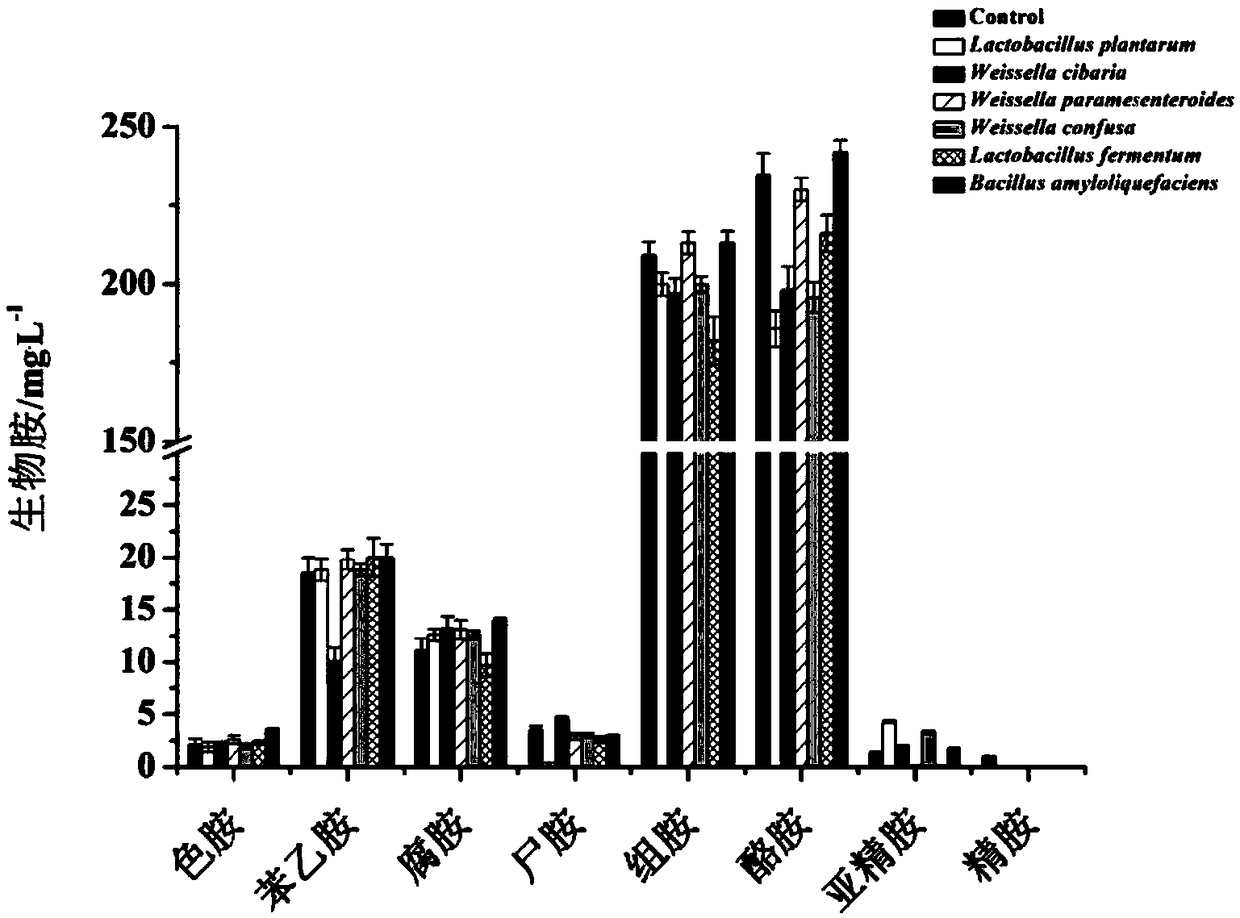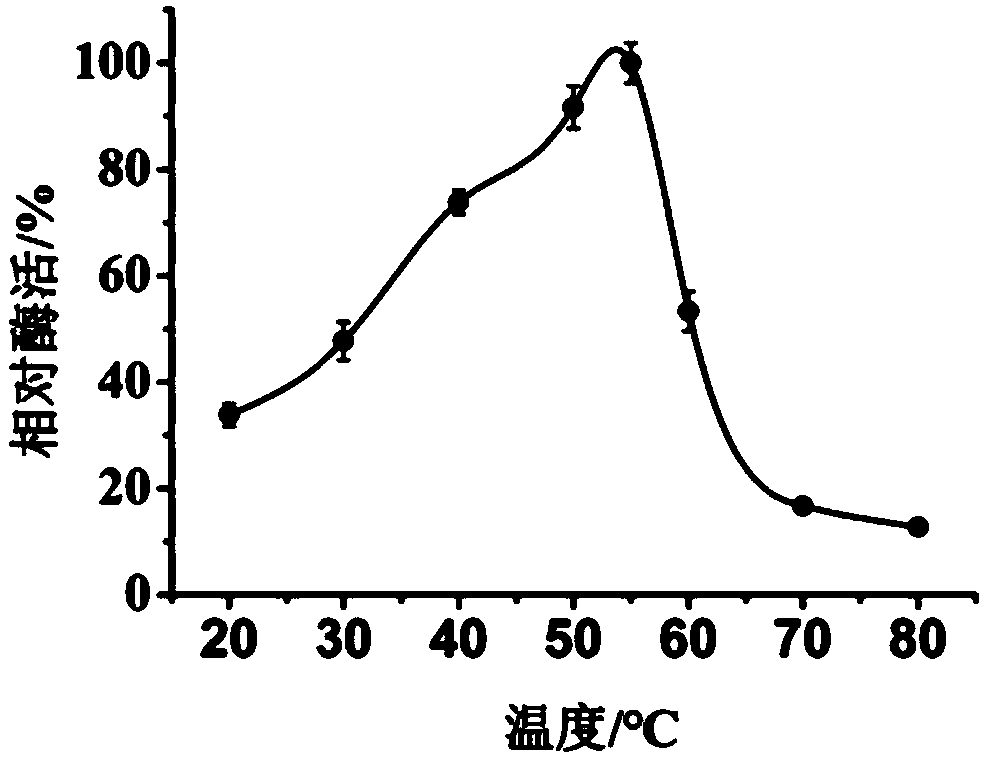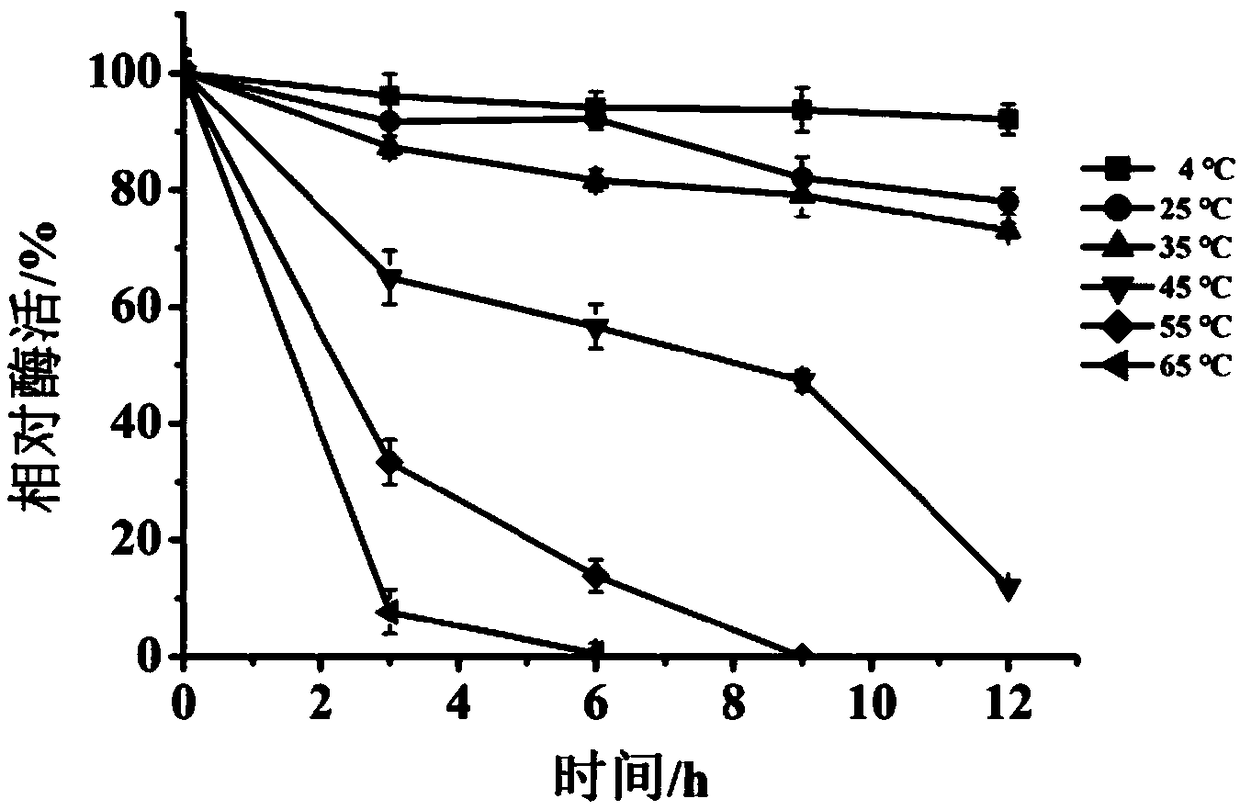Novel multicopper oxidase and application thereof to biogenic amine degradation
A technology of multi-copper oxidase and biogenic amine, which is applied in the field of molecular biology, can solve the problems of few degradation types and poor degradation effect, and achieve the effect of strong degradation of biogenic amine, improved safety, and obvious degradation effect
- Summary
- Abstract
- Description
- Claims
- Application Information
AI Technical Summary
Problems solved by technology
Method used
Image
Examples
Embodiment 1
[0021] Example 1 High-throughput screening of bacterial strains containing multiple copper oxidase genes
[0022] Primary screening medium (g / L): yeast extract 5, beef extract 5, peptone 5, NaCl 10, glucose 20, Tween-801mL / L, MgSO 4 0.2, MnSO 4 ·H 2 O 0.5, FeSO 4 0.4, triammonium citrate 2.0, CaCO 3 0.1, pyridoxal-5-phosphate 0.05, K 2 HPO 4 2.0, amino acid (histidine 3, tyrosine 3, lysine 3, tryptophan 3, arginine 3, ornithine 3, phenylalanine 3), bromocresol purple 0.6, adjust pH to 6.0±0.2.
[0023] LB medium (g / L): peptone 10, yeast powder 5, sodium chloride 10, pH 7.0±0.2.
[0024] MRS medium (g / L): yeast extract 4, beef extract 5, peptone 10, glucose 20 Tween 80 1mL / L, MgSO 4 0.2, MnSO 4 0.05,K 2 HPO 4 2. Triammonium citrate 2, sodium acetate 5, pyridoxal-5-phosphate 0.05, pH 6.0±0.2.
[0025] The detection method of various biogenic amine content: refer to GB / T5009.208-2008 Determination method of biogenic amine content in food.
[0026] Visible light...
Embodiment 2
[0037] Cloning and expression of embodiment 2 multi-copper oxidase gene
[0038] 1. Obtain the target fragment: design primers according to the gene sequence of the multi-copper oxidase in Weissella cibaria strain AB3b (GenBank accession number: NZ_JWHT01000002.1) in NCBI, and the primers are as follows (5'-3'):
[0039] Upstream CCGGAATTCATGAAAAACTATACGGACTATTTCTT
[0040] Downstream CCCAAGCTTTTAGTGGTGGTGGTGATGATGCATTTTCATTCCCATTTTT
[0041] Using the genome of W.cibaria as a template, the gene encoding multicopper oxidase was amplified by PCR. After the PCR amplification, the results of the PCR product in 1% agarose gel electrophoresis showed a target band of about 1500bp. The PCR product was purified with a DNA gel recovery kit, and the target fragment was recovered. After sequencing, the gene sequence of the multi-copper oxidase MCO derived from W.cibaria is shown in SEQ ID NO.1, and correspondingly, the amino acid sequences are shown in SEQ ID Shown in NO.2.
[0042] ...
Embodiment 3
[0049] The enzymatic property (temperature, pH, K of embodiment 3 multi-copper oxidase) m , V max )
[0050] TB medium (g / L): peptone 12, yeast powder 24, glycerol 5, K 2 HPO 4 ·3H 2 O 16.43, KH 2 PO 4 12H 2 O2.32, pH 7.0±0.2.
[0051] Preparation of crude enzyme solution: Induce expression of recombinant bacteria according to step 7 in Example 2, and obtain crude enzyme solution after ultrasonic crushing, pass through a 0.45 μL filter membrane for later use.
[0052] Purification of protein: wash the nickel column with 5-10 times column volume of deionized water at a flow rate of 5mL / min; add about 8-10 times column volume of Binding buffer at a flow rate of 5mL / min to balance the nickel column; Load the sample at a flow rate of 1mL / min; add about 8 to 10 times the column volume of Binding buffer at a flow rate of 5mL / min to balance the nickel column; use different concentrations of imidazole-containing phosphate buffer at a flow rate of 5mL / min The nickel column was...
PUM
 Login to View More
Login to View More Abstract
Description
Claims
Application Information
 Login to View More
Login to View More - R&D
- Intellectual Property
- Life Sciences
- Materials
- Tech Scout
- Unparalleled Data Quality
- Higher Quality Content
- 60% Fewer Hallucinations
Browse by: Latest US Patents, China's latest patents, Technical Efficacy Thesaurus, Application Domain, Technology Topic, Popular Technical Reports.
© 2025 PatSnap. All rights reserved.Legal|Privacy policy|Modern Slavery Act Transparency Statement|Sitemap|About US| Contact US: help@patsnap.com



